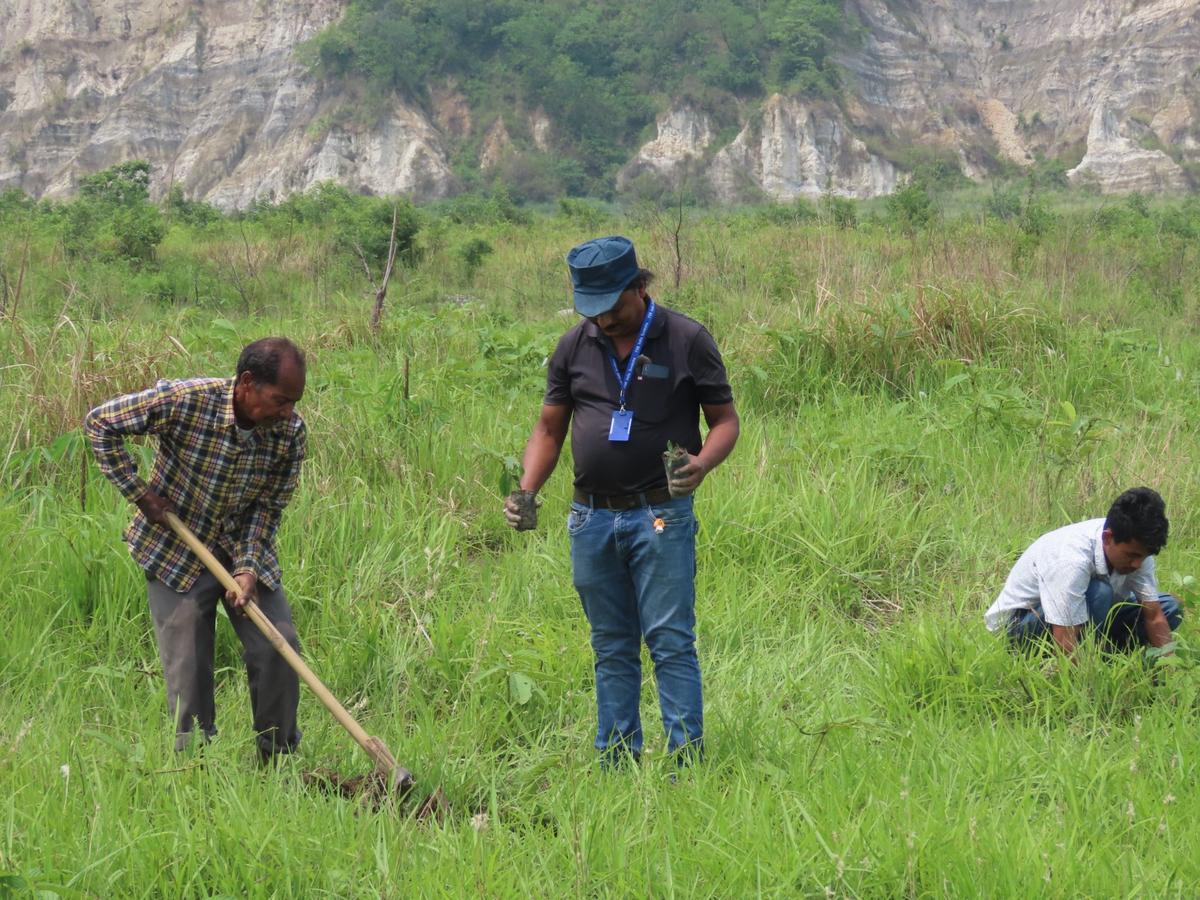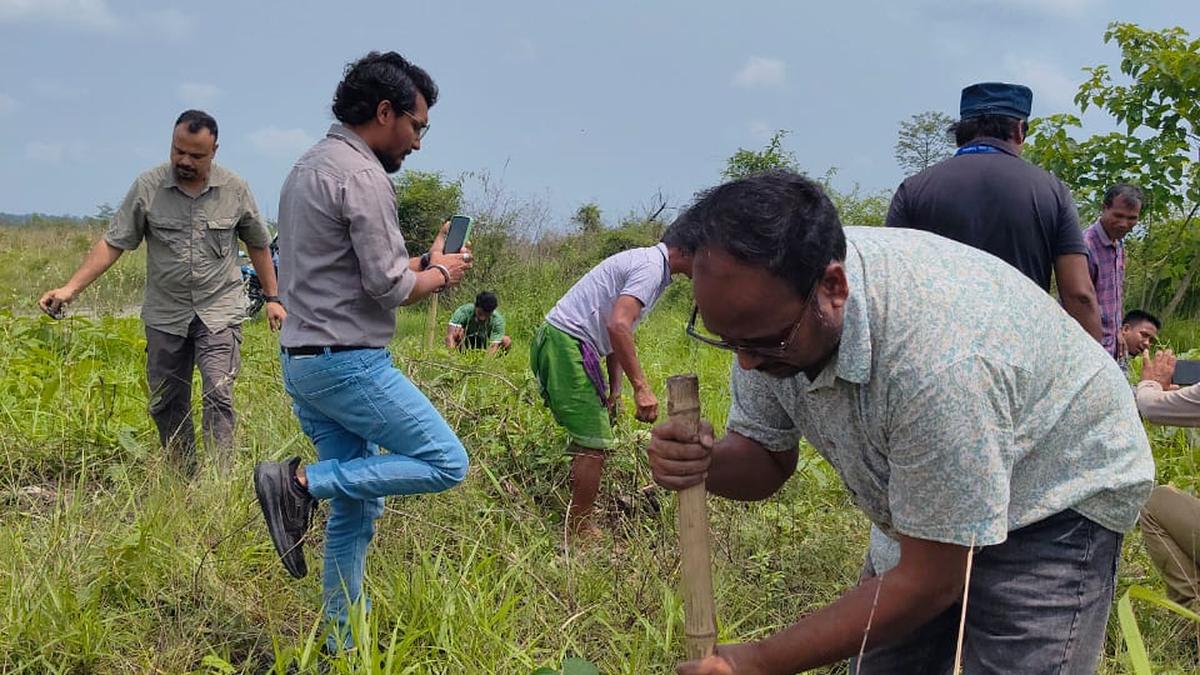Members of the biodiversity conservation group Aaranyak and a local joint forest management committee are planting saplings to replenish a degraded forest in Assam’s Udalguri district bordering Bhutan.
| Photo Credit: Special Arrangement
GUWAHATI
After a year, a mission to re-green a 100-hectare degraded Assam forest on the border with Bhutan to mitigate human-elephant conflicts has resumed.
Members of Aaranyak, a biodiversity conservation group, and the Dhansiri-Sikaridanga Joint Forest Management Committee in north-central Assam’s Udalguri district, planted 510 saplings of 11 native species. These saplings – and scores of others planted earlier – are envisaged to provide food and shelter for the elephants in the future.
The mission focuses on replenishing 100 hectares of a degraded patch in the district’s Bhairabkunda Reserve Forest, administered by the Dhansiri Forest Division. The drive started on May 14.
“The key native plant species being planted during the drive this year include outenga, bel, kola siris, gamari, bhatgila, amla, jamun, bhomora, xilikha, bhelkor, kum, odal, and tora, as they are called in local parlance. We aim to plant 1 lakh saplings during this summer,” Aaranyak’s Rabiya Daimari said.
Habitat replenishment can have a lasting impact in resolving human-elephant conflicts as it provides a long-term solution to promote coexistence between wild elephants and people. Aaranyak initiated this ambitious project two years ago with support from the SBI Foundation.

Members of the biodiversity conservation group Aaranyak and a local joint forest management committee are planting saplings to replenish a degraded forest in Assam’s Udalguri district bordering Bhutan.
| Photo Credit:
Special Arrangement
“The Aaranyak team is striving for habitat improvement and restoring degraded areas under the project to secure elephant habitat, facilitate elephant movement for long-term mitigation of human-elephant confrontation, and sustain the watershed for the region,” Bibhuti Prasad Lahkar, a senior conservation scientist at Aaranyak, said.
The area targeted for replenishment is a mosaic of grasslands and woodlands, with different soil substrata ranging from sandy coarse to rocky and swampy areas. Illegal logging and encroachment of elephant corridors in the vicinity are some of the factors that affected the forest patch strategic for elephants.
Aaranyak has been engaged in empowering local communities and securing habitats to promote human-elephant coexistence. As a wide-ranging species, the Asian elephant needs expansive resources for its survival and often comes into conflict with humans through crop and property damage, deaths and injuries, and retaliatory killing of the pachyderms.
“Raging human-elephant conflict undermines efforts for conservation of elephants and their habitat, besides affecting the well-being of people. The complex issue of mitigating such conflicts requires a multi-pronged and multi-stakeholder approach,” Alolika Sinha, a senior conservation biologist at Aaranyak, said.
Published – May 24, 2025 11:08 am IST
